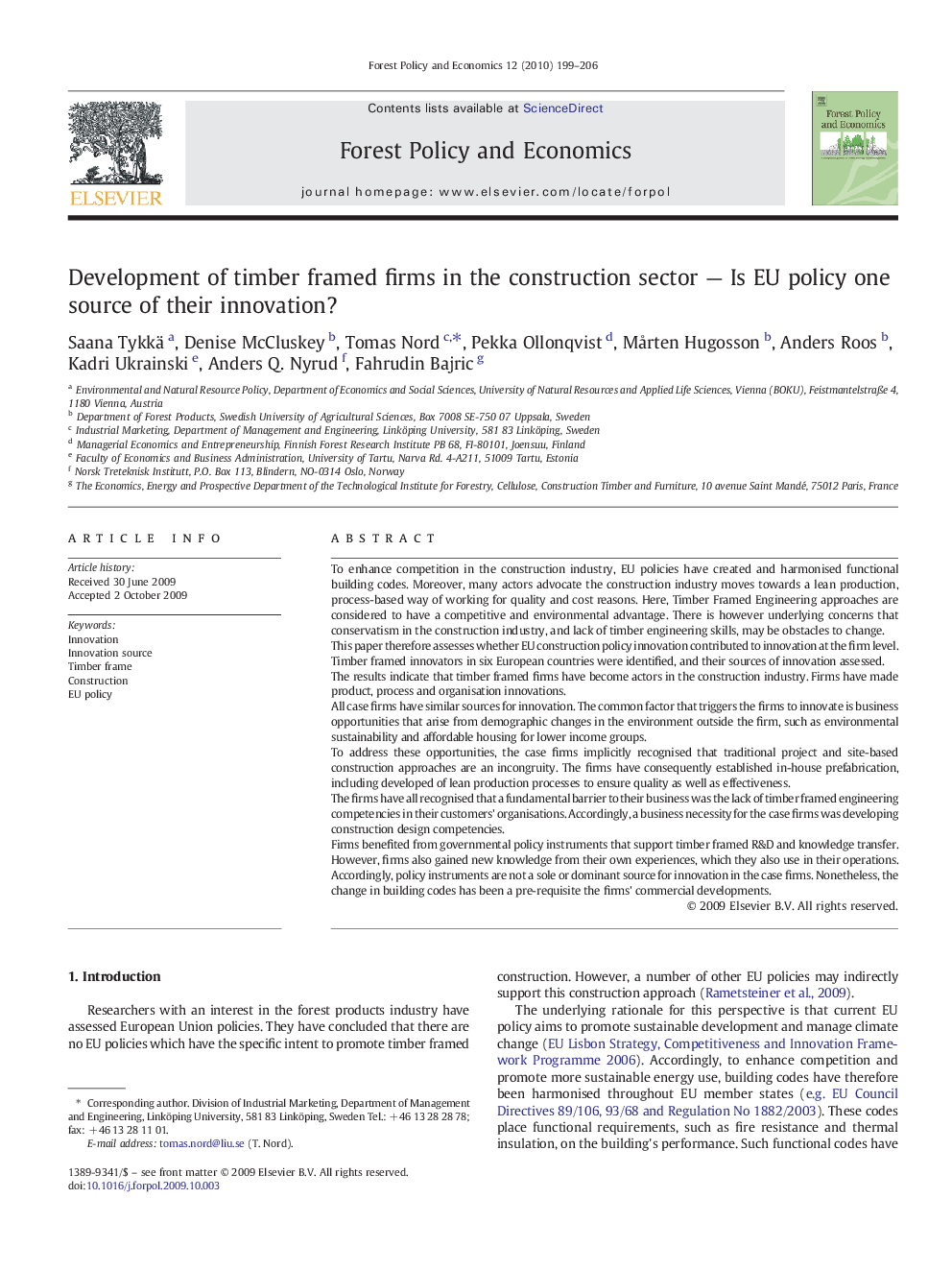| کد مقاله | کد نشریه | سال انتشار | مقاله انگلیسی | نسخه تمام متن |
|---|---|---|---|---|
| 91655 | 159828 | 2010 | 8 صفحه PDF | دانلود رایگان |

To enhance competition in the construction industry, EU policies have created and harmonised functional building codes. Moreover, many actors advocate the construction industry moves towards a lean production, process-based way of working for quality and cost reasons. Here, Timber Framed Engineering approaches are considered to have a competitive and environmental advantage. There is however underlying concerns that conservatism in the construction industry, and lack of timber engineering skills, may be obstacles to change.This paper therefore assesses whether EU construction policy innovation contributed to innovation at the firm level. Timber framed innovators in six European countries were identified, and their sources of innovation assessed.The results indicate that timber framed firms have become actors in the construction industry. Firms have made product, process and organisation innovations.All case firms have similar sources for innovation. The common factor that triggers the firms to innovate is business opportunities that arise from demographic changes in the environment outside the firm, such as environmental sustainability and affordable housing for lower income groups.To address these opportunities, the case firms implicitly recognised that traditional project and site-based construction approaches are an incongruity. The firms have consequently established in-house prefabrication, including developed of lean production processes to ensure quality as well as effectiveness.The firms have all recognised that a fundamental barrier to their business was the lack of timber framed engineering competencies in their customers' organisations. Accordingly, a business necessity for the case firms was developing construction design competencies.Firms benefited from governmental policy instruments that support timber framed R&D and knowledge transfer. However, firms also gained new knowledge from their own experiences, which they also use in their operations. Accordingly, policy instruments are not a sole or dominant source for innovation in the case firms. Nonetheless, the change in building codes has been a pre-requisite the firms' commercial developments.
Journal: Forest Policy and Economics - Volume 12, Issue 3, March 2010, Pages 199–206